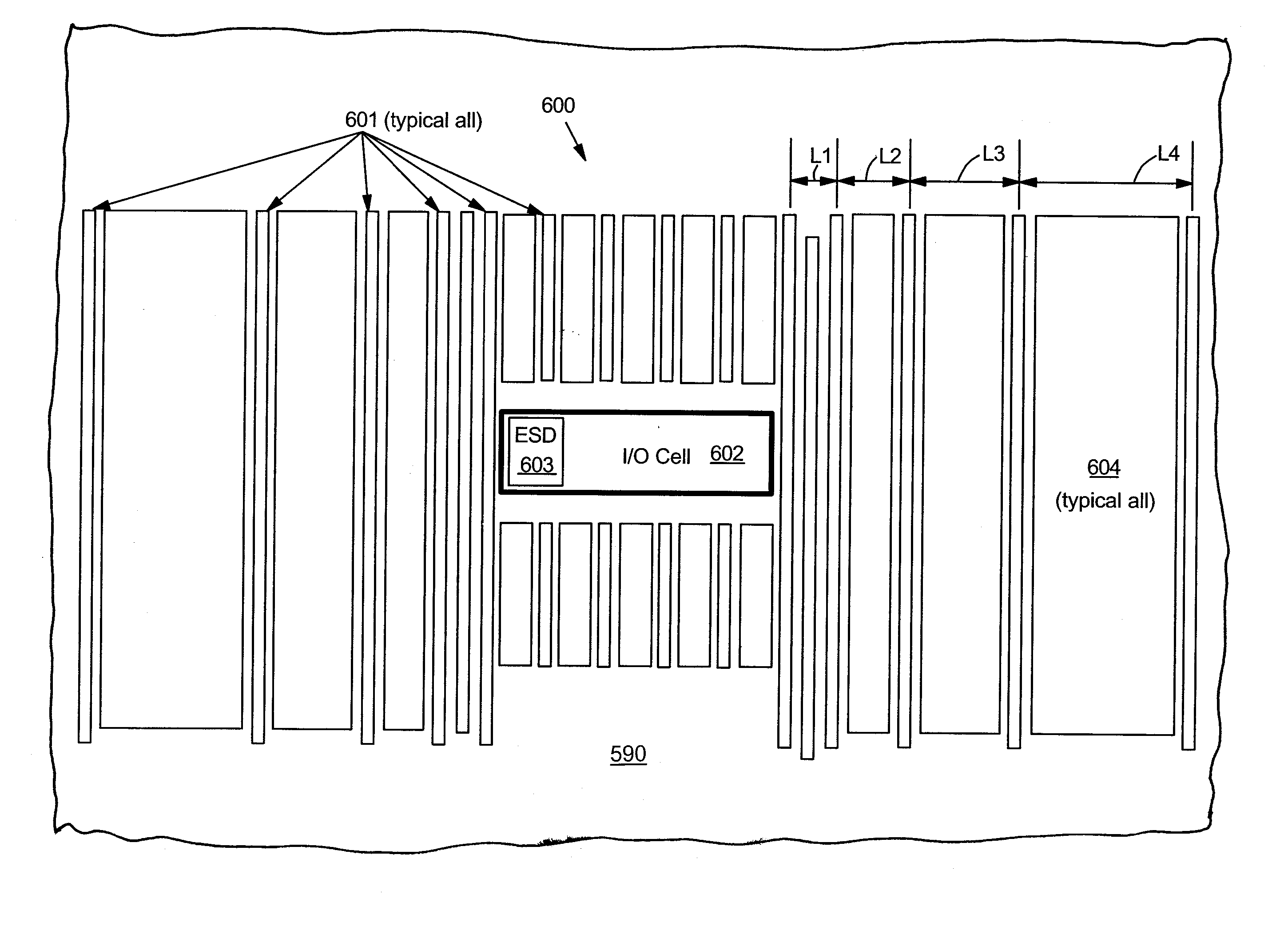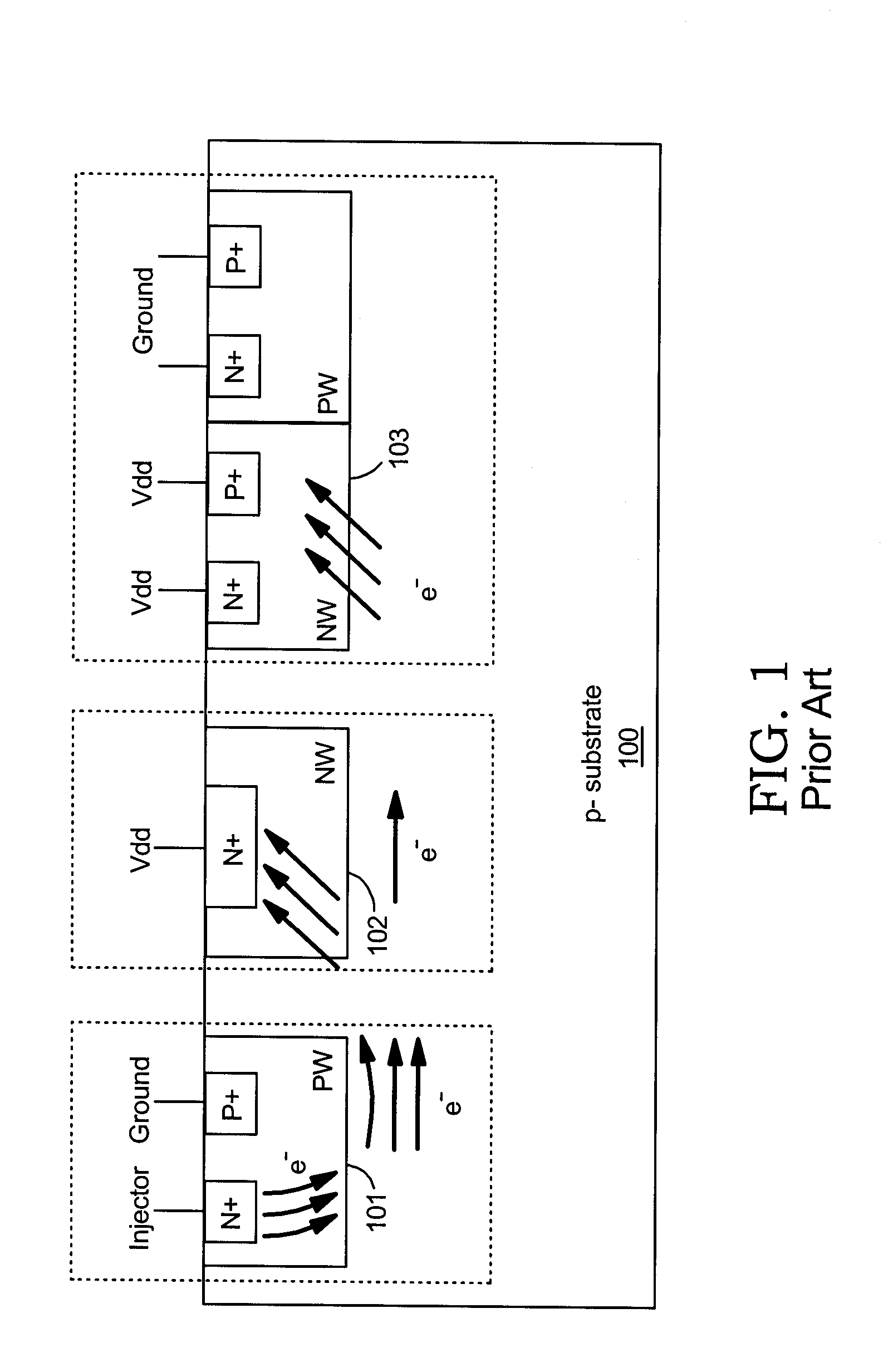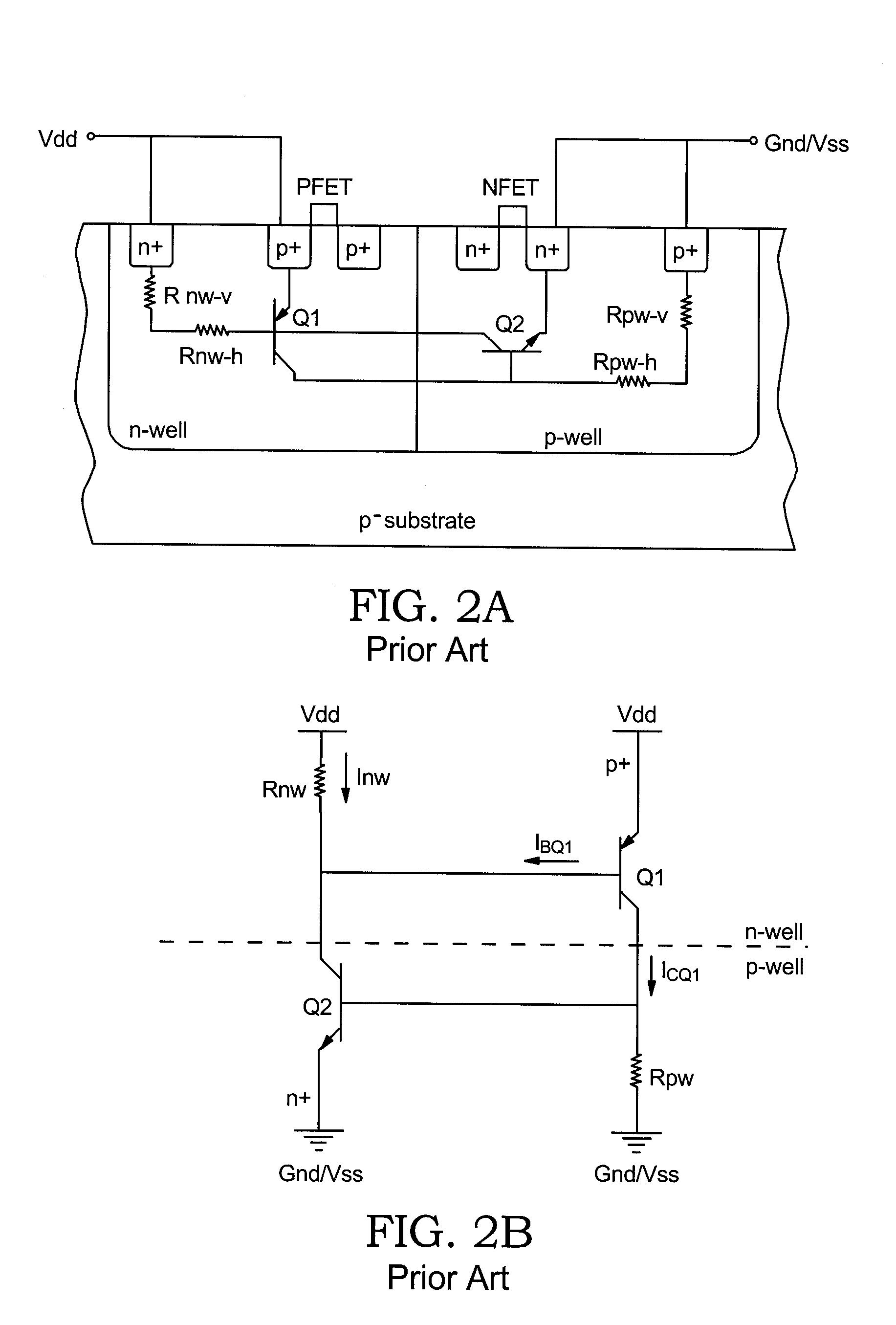Method and structure to suppress external latch-up
a technology of latch-up and internal latch-up, which is applied in the direction of semiconductor devices, electrical apparatus, transistors, etc., can solve the problems of premature failure of ic devices, immediate failure of devices, circuits or systems, and devices that are increasingly susceptible to failure, so as to improve the use of chip protection
- Summary
- Abstract
- Description
- Claims
- Application Information
AI Technical Summary
Benefits of technology
Problems solved by technology
Method used
Image
Examples
Embodiment Construction
[0037] The present invention relates to a method and structure for suppression of latch-up within integrated circuits. Injection of carriers into an IC can arise at any point of conduction on the IC and can originate from a variety of sources. Regardless of injection source and location, the density of injected carriers will be greatest within the region of the IC near the location of injection, i.e. the injection site. It is in the region near the injection site where protection against latch-up should be the most robust. As distance is traversed away from the location of current injection, however, there will be fewer carriers available to cause a latch-up condition. Thus, the latch-up protection strategy remote from the injection source need not be as robust as it need be nearer the injection source, yet maintaining latch-up robustness for a given injection of current.
[0038] In terms of electrical variables, a latch-up condition can occur when the injected current, for example, ...
PUM
 Login to View More
Login to View More Abstract
Description
Claims
Application Information
 Login to View More
Login to View More - R&D
- Intellectual Property
- Life Sciences
- Materials
- Tech Scout
- Unparalleled Data Quality
- Higher Quality Content
- 60% Fewer Hallucinations
Browse by: Latest US Patents, China's latest patents, Technical Efficacy Thesaurus, Application Domain, Technology Topic, Popular Technical Reports.
© 2025 PatSnap. All rights reserved.Legal|Privacy policy|Modern Slavery Act Transparency Statement|Sitemap|About US| Contact US: help@patsnap.com



